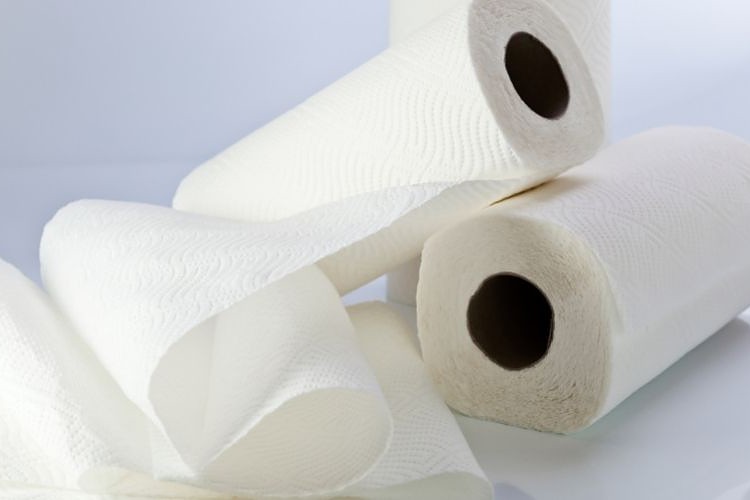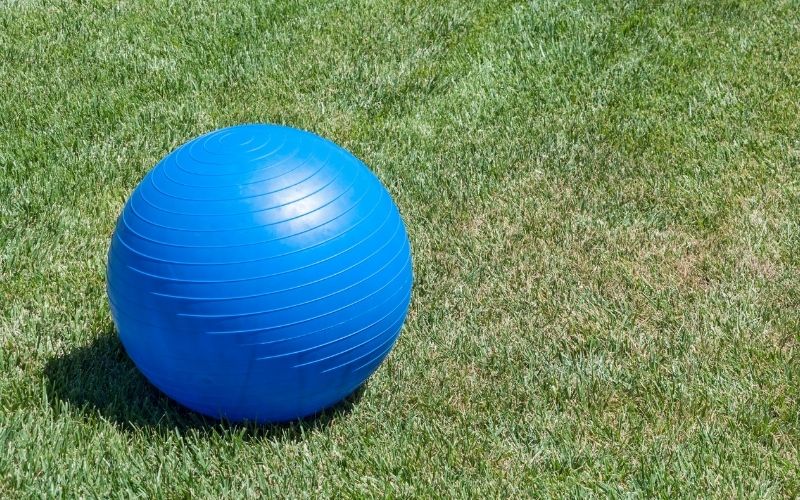Picture this: you’ve just finished a long and tedious move from your old rental to your first house. The process has been testing in almost every way, but alas, you’re finally here.
So, once you’ve settled in a bit, you finally start setting up your home office.
You’ve got your desk, an ergonomic office chair, and your exercise ball to sit on every now and then to keep your core engaged.
But, oh no! It seems you’ve misplaced the plug for your exercise ball during the move, rendering it completely useless!
Lucky for you, we’ve compiled a list of solutions to lean on when you can locate your plug.
Table of Contents
Duct Tape
Don’t worry, we aren’t telling you to slap a piece of tape onto the plug hole and call it a day.
Most people have a roll of duct tape lying around, so this is a great method to try out when you don’t have the time or energy to try out more time-consuming methods.
Start by cutting off a piece of tape that’s 4 to 6 inches. The bigger the plug hole, the longer the piece of tape should be. Lay the tape on a table with the adhesive side up so that you don’t have to pry it off the surface.
Now it’s time to get rolling. Don’t rush this step.
Roll the tape up tightly and slowly so that there are no gaps in between the layers. Once you’re finished rolling, you will be left with your makeshift plug.
The plug should be thinner on one side, making a subtle “V” shape.
Inflate the ball completely and insert the thinner end of the duct tape plug into the hole of the exercise ball. Make sure to push it in well to ensure air cannot escape.
You should be left with a roll of duct tape sticking out from the plug. This is where you have to be very careful. Using very sharp scissors, cut off the remainder of the plug.
Be sure not to pierce the exercise ball!
You should be left with a securely plugged-up exercise ball that you can continue using as normal!
Ear Plug

This method will work best with small exercise ball plug holes.
Squishy ear plugs are designed to fit in any shaped crevice. If you have some lying around from a long-haul flight or a sleepover with a snoring friend, they might come in handy here.
It’s important to clarify that we are specifically talking about ear plugs made from soft foam. Firm ear plugs won’t work well because they’ll have to fit the exercise ball plug perfectly, which renders this hack far less convenient.
Take your ear plug and compare it to the exercise ball plug. It should be larger than it, since you want the plug to fill up the hole and seal it.
Once you’ve determined the sizes are compatible, fill the ball with air and roll the plug in your hands gently to make it smaller so that you can fit it in the plug.
Quickly place it in the plug and hold it in place until it returns to its original size and seals the plug hole.
The ear plug should be nestled into the hole. It should not be easy for you to remove. When it comes time to take it out, use a pair of electrical pliers to grasp hold of it.
This is probably not going to be a long-term solution, but it should allow you to finish your day while gently bouncing away.
Exercise Ball Replacement Kit
So, you want a full-proof option that doesn’t involve duct tape? That’s fair enough.
Luckily, there are several vendors who know that exercise ball plugs are lost far more often than most of us care to admit.
You can buy exercise ball plugs on their own, but replacement kits also include a small tool to remove the plug when you want to deflate the ball. It’s also useful just in case the plug doesn’t fit right.

The removal tools look like small forks with two prongs. You slide it under the head of the plug and pull up to pop the plug out.
You can also do this with a small spoon. We don’t recommend using a normal metal fork, as you might end up popping the ball, and then you’ll have a whole other problem on your hands!
Exercise balls are typically on the larger size. Therefore, your plugs will need to be bigger, too.
Opt for the longer plug option, as these are designed to fit exercise balls. The shorter plugs are better suited for yoga and stability balls.
Exercise Ball Plug Replacement Kit
This exercise ball plug replacement kit comes with five replacement plugs and a plug removal tool.
This kit will keep you well-prepared for any plug-related emergency. Just keep in mind that this kit does not come with a pump, so you will need a way to inflate the ball before inserting the plug.
Air Pump and Plug Kit
If you need an air pump, we recommend going with this affordable kit. It’s perfect for when you dig out a deflated exercise ball without any plug or pump.
Start by pumping the ball up, then insert the simple plastic plug.
It also contains the small fork-like plug removal tool. Customers have found this kit reliable and incredibly budget-friendly. It gets the job done and has let many buyers continue to use their exercise balls without any other issues.
Paper Towels
If you don’t have duct tape, but you do have paper towels and clear tape, you may still be able to make your own exercise ball plug. This hack relies on the thickness and density of paper towels to seal the plug hole.

Start by cutting a strip of paper towel. It should be about 1 ½ inches thick or the same width as standard duct tape.
Roll the paper towel as tightly as possible. Take your time and be meticulous with this. You want to fit as much paper towel into the makeshift plug as possible, so be sure there are no gaps in between the layers of paper.
Now it’s time to grab your tape.
This is going to ensure that your paper towel plug doesn’t unravel. It’s also going to seal all the layers together. Wrap the paper towel roll in one or two layers of clear tape.
You should be left with a small plug-shaped roll. Similar to the duct tape plug, one end of the plug should be smaller and thinner than the other. Ideally, you do not want any paper towel sticking out of the plug.
Inflate your ball completely. It should still be slightly soft to the touch, so be mindful not to overfill it, as this may cause your ball to pop.
Insert the plug into the plug hole, putting the thinner side in first. Try to push the plug in as deep as possible, as this will ensure air isn’t able to escape.
Now it’s time to trip off any remaining plug.
Make sure to do this with very sharp scissors so that you can chop it off in one cut! If you have to work the blades through the plug slowly, you won’t end up with a clean cut.
Cut the plug as close to the ball as possible. Be mindful about where the scissor blades are so that you don’t end up piercing the ball.
Once you’re done, you should be left with a well-inflated and secured exercise ball that you can use to your heart’s content.
We love this method because it uses materials you probably already have lying around, and it makes enjoying exercise balls convenient and accessible.
Things to Keep in Mind

There is a difference between an exercise ball plug not working and a ball releasing air naturally.
All balls, regardless of their quality, are going to slowly deflate over time. If you find your ball is slightly softer than it was a couple of weeks ago, you may just need to inflate it a bit.
It’s also important to keep in mind that the best plug replacement option is the replacement kit. However, that doesn’t mean that the other options won’t work well, especially short-term.
To Wrap Things Up
There are several ways you can plug up an exercise ball if you’ve misplaced the plug.
Using an exercise ball day-to-day should be enjoyable (and even relaxing!), so the last thing you want to do is lose sleep over misplacing a tiny piece of plastic.
Our personal favorite plug replacement method is the duct tape. A lot of exercise ball users have tried it and found a lot of success. Duct tape is sturdy, affordable, and easy to handle.
At the same time, if you have some squishy ear plugs lying around, give those a try, too.
Have you ever had to plug up an exercise ball? What materials did you use to get the job done?
Let us know in the comments below.
Good luck!

My name is Vance, and I am the owner of To Ergonomics. Our mission is to improve your workflow by helping you create a supportive and welcoming environment. We hope that you’ll find what you’re looking for while you’re here.



